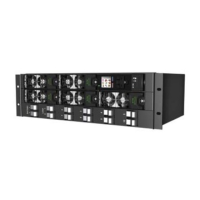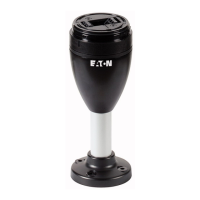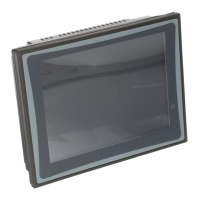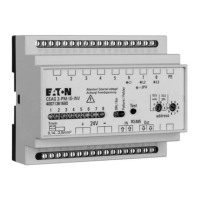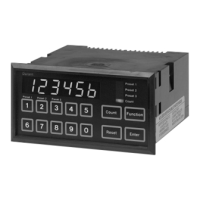Control Functions
Copyright © 2004-2009 Eaton Corporation. All Rights Reserved.
IPN 997-00012-35E December 2009
53
Low Voltage Disconnect (LVD)
Eaton Low Voltage Disconnects (LVD) can be connected either as load or battery disconnect
and have two purposes:
• to protect a VRLA battery from deep discharge and premature failure, and/or
• to reduce the load on a battery under discharge so that high priority equipment operates
for a longer time after an AC failure.
Eaton LVDs are normally wired as battery disconnect.
The SM65 supervisory module has two independent LVD control channels (LVD1 and
LVD2) with three modes of operation:
1 Normal Mode: In this mode LVD2 Slave Mode and AC Timer Mode are disabled.
When LVD1 and LVD2 are enabled then LVD2 will not disconnect until after LVD1 has
disconnected.
2 LVD2 Slave Mode: In this mode LVD2 Slave Mode is enabled and LVD2 will mirror the
operation of LVD1.
3 AC Timer Mode: When AC Timer is enabled, the LVD will disconnect either after the
AC Timer Disconnect Delay, or the bus voltage drops to the Disconnect Voltage,
whichever happens first. Both LVD1 and LVD2 can be set to AC Timer mode if required.
Ensure the LVD reconnect voltage is set higher than the expected open-circuit recovery voltage
of the discharged batteries.
The operation of LVD contactors can be tested from the SM65 keypad using the LVD Test
function. See details on page
15.
Relay Test
Simulates an alarm at the SM65 by changing the state of a relay between active and inactive.
Use the Relay Test function to test reception of alarms at a remote location. See details on
page
14.
System Overload
See System Overload alarm in Alarm Descriptions on page 49.
Temperature Compensation
As the ambient temperature of a battery drops (or rises) the voltage required to maintain full
charge increases (or decreases). Temperature Compensation automatically varies the float
voltage to cancel the effects of changing temperature.
Enable Temperature Compensation for optimum battery life and battery capacity over a
wider temperature range.
Temperature Compensation does NOT function during a Battery Test.
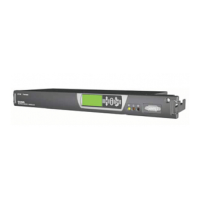
